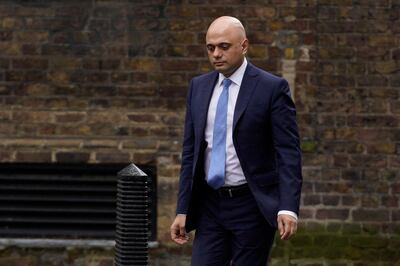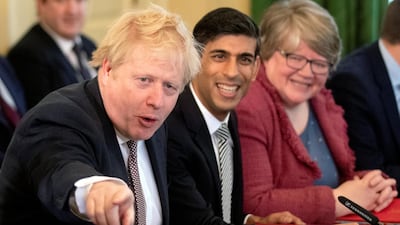A reshuffle, in UK government cabinets, is the process by which new ministers are brought in and existing ones either dismissed or moved to different portfolios. London experienced one such event late last week.
Reshuffles have a well-established choreography. I have personally taken part in them over 35 years, as Member of Parliament, a ministerial aide, a promoted minister, a recipient of the phone call dispensing with my services and as a returning minister. The days before are filled with speculation – mostly unfounded, but often pitilessly directed at likely victims – as to who is going to be in or out.
A chart is drawn up in Downing Street with the moves set out, early phone calls are made to get the sackings done quickly and then the winners are called to walk up Downing Street in glory to receive their confirmed roles in front of the political media machine, which in turn goes into overdrive to spell out a narrative behind the prime minister’s decision-making.
And there is always someone who says “no”.
Last week’s reshuffle stuck faithfully to this pattern. Following a remarkable election victory in December, Prime Minister Boris Johnson was always going to take an early opportunity to shape the government he wanted. This is a key moment, especially for an administration likely to be conservative – and perhaps under Johnson’s leadership – for the next decade. The UK is piloting a course outside the EU and answering questions about its place in the wider world – on trade, defence and security, alliances and the common global challenges of climate, population and migration.

The clues to the future are in the names appointed to be his close team. Keeping Priti Patel as Home Secretary and Dominic Raab as Foreign Secretary was sound. Both shared the PM’s euro-scepticism during his campaign to leave the EU, and keeping an existing Foreign Secretary in place to build the relationships needed in a difficult world is essential, especially after he has spent only a few months in the role.
But the loss of Sajid Javid as Chancellor of the Exchequer – head of the treasury – was the big and unexpected shock. It was the "no" moment. As a Thatcherite with a smart financial background, Mr Javid had many admirers during his time in the role. But he would only have been allowed to keep it on the condition that he dismissed his own aides and merged his advisory team with one controlled by the prime minister's office. Mr Javid said "no", and no amount of persuasion could change his mind. By accident or design, Boris Johnson had lost a key player within weeks of winning the election.
Despite the “no” word being heard early in the process, the rest of the reshuffle continued, and the media and political world picked over its predictions to make sense of it all.
Nonetheless, there are other extraordinary features of what has happened in Downing Street. A quiet revolution is taking place in the UK, and the ministerial changes that have been made are pivotal.
Firstly, there was little attempt to ensure balance in terms of the great former divide over EU membership. The cabinet and senior ministers, to a man or woman, are individuals who either campaigned to leave the EU on any terms or have totally accepted the possibility of such an outcome, and who can therefore be relied upon to support the prime minister’s decisions on the negotiations without question.
The EU should take note of this as its negotiations with Britain get seriously underway. Mr Johnson is playing off a full deck. In addition, the removal of a number of ministers – including some of unimpeachable quality but who were perceived to be either a potential source of difficulty in future or guilty of some political misdemeanour in the past – made clear that there is no longer any tolerance for dissent. Such ‘weaknesses’ in the past, the thinking goes, have are partly responsible for the Conservative Party’s failures since 2015.
Secondly, behind the scenes but brought to the fore by Mr Javid’s sacking, is a new mentality of micro-management and direct rule, architected by the prime minister’s chief adviser, Dominic Cummings. The whole government’s centre of gravity now lies firmly directed in the prime minister’s office at 10 Downing Street. The takeover by Number 10 of the system of special advisers – political appointees who used to be personal to ministers, but are no longer so – suggests that neither individual ministries, nor ministers, can be fully trusted to deliver the government’s existing or future agendas.
Watch this space. And get very used to the name of Dominic Cummings.
Alistair Burt is a British politician and a former Minister of State for the Middle East

